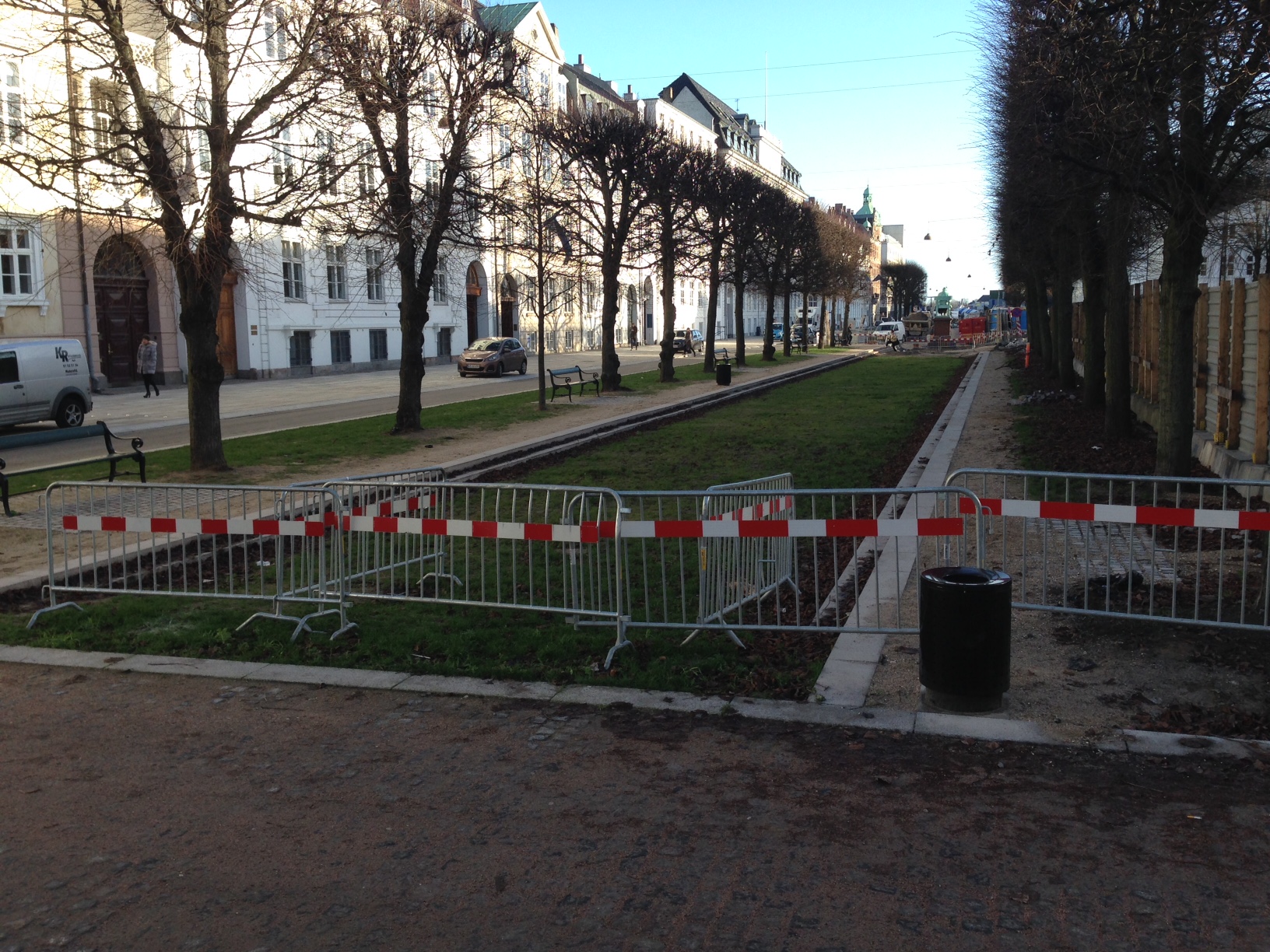Costs
Construction economics is calculated in relation to what it would cost to establish a system for cloudburst and stormwater management in Copenhagen if it was built tomorrow. The total estimate of construction costs consequently differs from socio-economic costs by measures where the costs are calculated in terms of present-day value over a longer timeframe with a supplement of 37% in charges and tax distortion. The construction estimate contains 20% for project planning and 20% for unforeseen expenses. The estimate does not contain depreciation and operating costs. It will cost DKK 11bn at 2015 prices to construct the combined solution:
- Surface solutions will cost an estimated DKK 4.975 billion. The costs of municipal and the private co-financing projects will be reimbursed through water charges.
- Cloudburst pipes will cost an estimated DKK 2.66 billion, covered through water charges (HOFOR).
- Disconnection and connection outside property boundary will cost around DKK 1 billion, covered through water charges (HOFOR).
- Protection of homes with anti-flood backwater valves and disconnection within property boundary is estimated at around DKK 2.4 billion, financed by landowners.
The option of urban space improvements will cost around DKK 1 billion and will be financed by the City of Copenhagen.
The estimate covers the total costs incurred by the City of Copenhagen, Capital Area Supply Company (HOFOR) and private landowners. The utility companies Frederiksberg Forsyning and Nordvand are part of the solution in Copenhagen because cloudburst management in these municipalities are dependent on the Copenhagen solution and vice versa. If these utilities contribute DKK 900 million, the construction estimate of the combined solution amounts to DKK 12 billion.
The part of the combined solution concerned solely with managing water (hydraulic function) can be financed through the water charges. Water charges will increase to cover these costs. It has been estimated that the water charge of a household consuming 110 cubic meters water annually would increase by an average of DKK 890 per year.
The combined solution additionally necessitates private individuals to invest in anti-flood backflow valves etc. and local drainage of stormwater. If the implementation of the cloudburst and stormwater management is coordinated with other construction projects in the city, up to DKK 1 billion can be saved over the whole implementation period.
Benefits
The cloudburst management plan will contribute to rises in property values and increased employment. It is estimated that the urban space improvements with recreational value will increase property prices in Copenhagen of just under DKK 1.4 billion. The upgrading of urban spaces can also increase revenue from property tax due to a significant increase in the value of those properties that are adjacent to the parks. Over 100 years, this extra revenue will amount to a value in present-day prices of DKK 1 billion. However, the equalisation system at present is structured in such a way that 66% of property tax revenue in Copenhagen is included in the equalisation and consequently goes to other municipalities.
Total employment of more than 13,000 full-time equivalents with DKK 1.6bn in tax revenues can be created in the construction phase. The tax revenue created as a result of additional employment in the building and construction industry always accrues to the municipality in which the employee is resident. It has therefore not been possible to calculate the effect in the City of Copenhagen alone. If the construction of facilities for urban space improvements is additionally included, the number of new full-time equivalents will rise to more than 15,000 and tax revenues to around DKK 2bn.
The assessment shows that under present-day circumstances we can expect an overall benefit of DKK 5bn from the combined solution in Copenhagen in comparison to a situation in which the City does nothing. The socio-economic benefit by choosing the combined solution compared to the traditional sewer solution is around DKK 9bn. The socio-economic assessment makes a comparison of the costs of the two solutions and benefits to be made from reducing damage in the city in comparison with the business as usual approach, as well as analyses the cost-effectiveness for addressing stormwater concerns.



